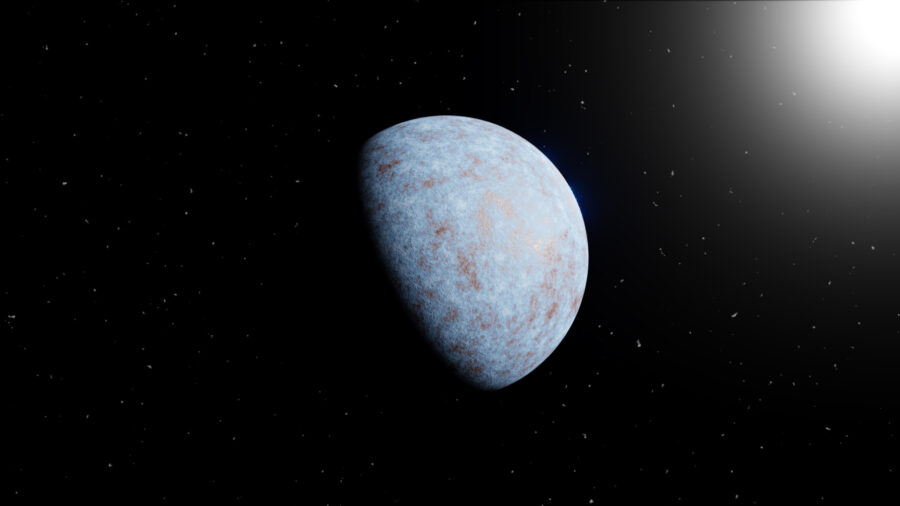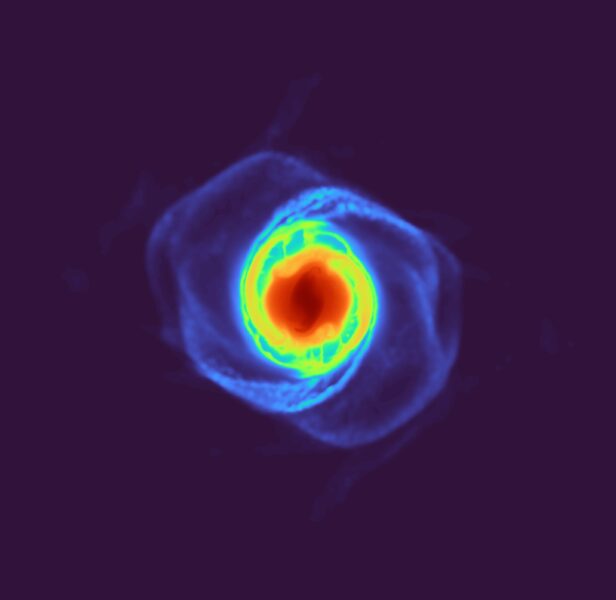Astronomers have discovered two Neptune-size planets that are denser than rock and in searingly close orbits to their star. How did these odd worlds form?

Luca Naponiello
It seems like a bizarre new exoplanet is being discovered every day. Characterizing and ultimately categorizing these strange new worlds can be a challenging task for astronomers. It’s only natural that astronomers have used the solar system as a kind of template since the first “hot Jupiter” was found in 1995. Nowadays, the monikers “exo-Venus,” “super-Earth,” and “sub-Neptune” are ubiquitous when describing new exoplanet discoveries.
But there are limits to leaning on our nearest neighbors as a frame of reference.
Two new studies discuss the discovery of extremely dense Neptune-size planets that, unlike Neptune itself, are in very close orbits around their dwarf host stars. The orbits of both of the newly known worlds have periods shorter than five days, putting them in a region dubbed the “Neptunian Desert.” They can’t have come together where they are, so Neptunish worlds in this world-space must have formed in unusual or dramatic ways.

Watson et al. / Monthly Notices of the Royal Astronomical Society 2019
Waterworld of a Different Kind
In the first study, published in the Monthly Notices of the Royal Astronomical Society, a group led by Ares Osborn (University of Warwick, UK) used data from the Transiting Exoplanet Survey Satellite (TESS) paired with new ground-based observations to discover the planet cataloged as TOI-332b. This world has three times Earth’s radius, 57 times its mass, and completes a full orbit every 18 hours. Despite being close to Neptune in size, it’s much denser (almost 10 grams per cubic centimeter, so almost twice as dense as Earth and six times more than Neptune), leading the group to conclude that it must have almost no atmosphere.
If this world formed via core accretion, in which a small rocky core comes together first before gravitationally gathering gas around it, TOI-332b should have sported a Jupiter-size hydrogen-helium envelope. And while it's true that the star would have irradiated much of that atmosphere, the group calculated that that effect couldn’t account for the depletion observed.
David Armstrong, one of the scientists on the project, says that there are a few possible explanations for this unusual world. “Perhaps the planet formed in an area lacking elements like hydrogen or helium,” he says, “or maybe this is the result of two planets crashing into each other during the formation.”
Impact-made Neptune

Jingyao Dou
A violent impact might also explain a second newly discovered exoplanet, as proposed in a second study published in Nature.
The planet, TOI-1853b, is about 3.5 times as wide as Earth, with 74 times its mass and an orbital period of 1.24 days. An international group of scientists led by Luca Naponiello (University of Rome Tor Vergata) also used TESS data and ground-based telescopes to discover the world. TOI-1853b is unique because it’s on average denser than steel. Planets with a similar mass usually have radii more than twice as large.
Data from the High Accuracy Radial velocity Planet Searcher for the Northern hemisphere (HARPS-N) spectrograph reveals the planet’s possible composition. Like the other hot Neptune, this one’s atmosphere appears negligible. Nevertheless, it might not have a rocky surface — it might be a “water world.”
“The core of the planet is rocky, but there could be a huge layer of water on top of the core, partially in supercritical form,” Naponiello says. In other words, the temperature and pressure are so hot and heavy on TOI-1853b that water no longer has distinct liquid and gas phases. This allows for a water world without an atmosphere.
Will these two planets provide the oasis astronomers need to understand planet formation? Only time (and more such discoveries) can tell.
 1
1









Comments
Rod
September 30, 2023 at 8:54 am
Very interesting report. The abstracts indicate that these Neptune size exoplanets pose challenges to formation models. In our solar system, there is no analog for these. I use these sites that show properties for the two exoplanets in the report.
http://exoplanet.eu/catalog/toi-332_b/
http://exoplanet.eu/catalog/toi-1853_b/
https://exoplanetarchive.ipac.caltech.edu/overview/TOI-332%20b#planet_TOI-332-b_collapsible
https://exoplanetarchive.ipac.caltech.edu/overview/TOI-1853%20b#planet_TOI-1853-b_collapsible
You must be logged in to post a comment.
You must be logged in to post a comment.